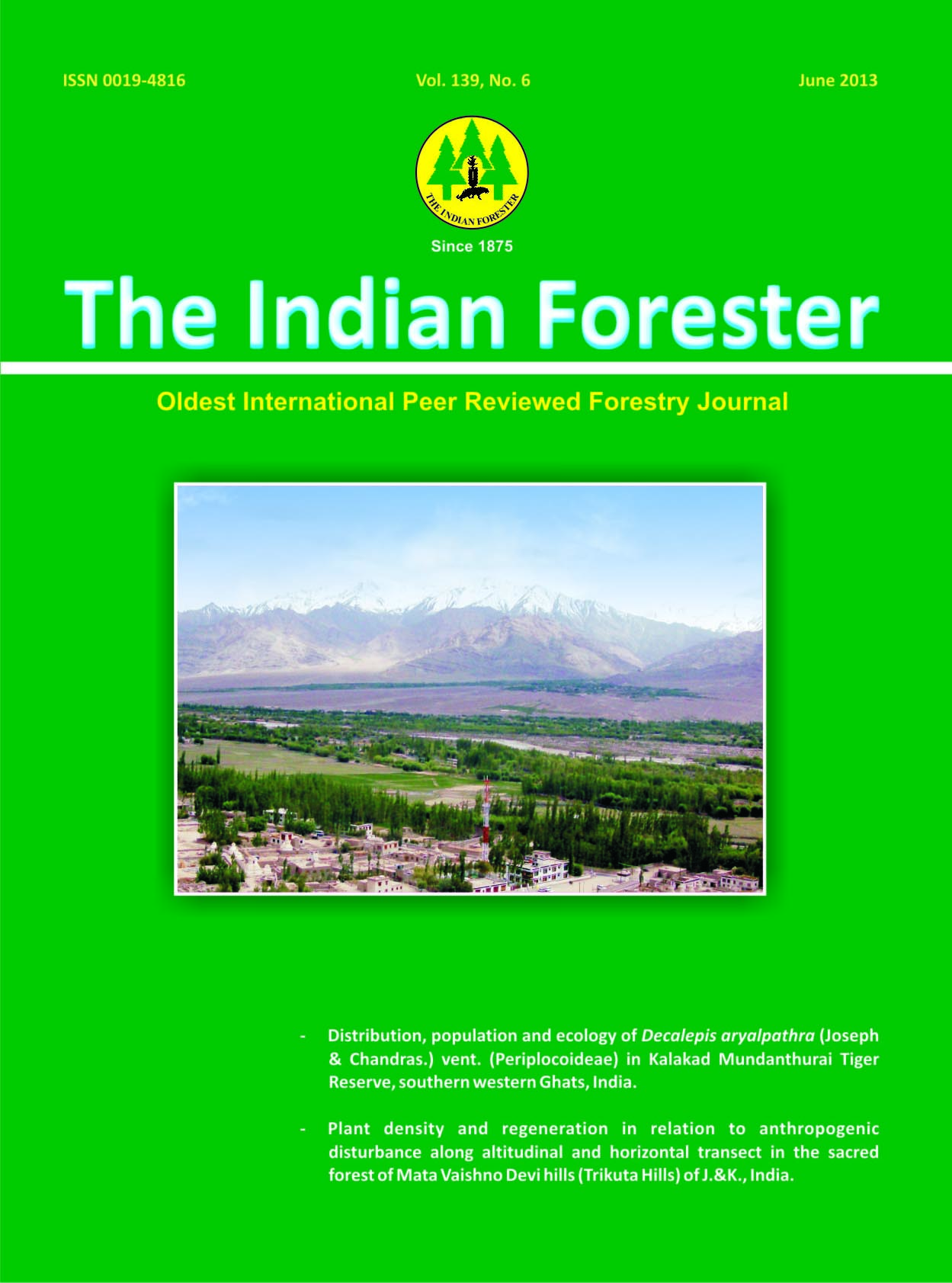Distribution, Population and Ecology of Decalepis aryalpathra (Joseph & Chandras.) Vent. (Periplocoideae) in Kalakad Mundanthurai Tiger Reserve, Southern Western Ghats, India
DOI:
https://doi.org/10.36808/if/2013/v139i6/33759Keywords:
Decalepis arayalpathra, Endemic, Distribution, Population, KMTRAbstract
Based on the floristic survey conducted, Decalepis arayalpathra (Joseph & Chandras.) Vent., an endemic and endangered species of southern Western Ghats found to be distributed in (1) near Vellachipudavu, on the way to Aduppukal mottai, (2) Oothu, above Amman kovil, (3) Visthara mottai, above Naraikadu and (4) Thaipatham mottai, above Nambi Koil of Kalakad Mundanthurai Tiger Reserve. A total of 932 individuals were recorded from the sample plots established in these four sites. Among these more number of individuals were recorded from Thaipatham followed by Visthara mottai, Vellachipudavu and Oothu. Many populations of this species were also sighted in the inaccessible areas of Thaipatham and Vellachipudavu. Asparagus gonocladus, Eriocaulon ensiforme, Exacum atropurpureum, Hedyotis purpurascens, Osbeckia wightiana etc. are some of the associated species of D. arayalpathra. The tubers of this species are found to be eaten up by wild boars at Vellachipudavu. Though there are many individuals recorded, the populations are still limited and fragmented extensively. The lag in the regeneration as well as continuous harvest of tubers for medicinal use leads to the drastic reduction in the population size of this species.Downloads
Download data is not yet available.
Downloads
Published
2013-06-01
How to Cite
Malleshappa, H. (2013). Distribution, Population and Ecology of <I>Decalepis aryalpathra</I> (Joseph & Chandras.) Vent. (Periplocoideae) in Kalakad Mundanthurai Tiger Reserve, Southern Western Ghats, India. Indian Forester, 139(6), 483–486. https://doi.org/10.36808/if/2013/v139i6/33759
Issue
Section
Articles
License
Unless otherwise stated, copyright or similar rights in all materials presented on the site, including graphical images, are owned by Indian Forester.





